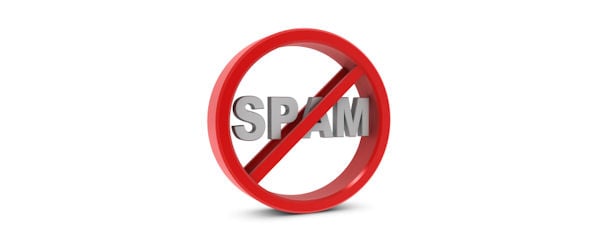American businesses spend a whopping $712 per worker, per year, in the battle against spam. Even though 60 percent of companies deploy enterprise-wide spam filters, two out of three email messages are spam.
Spam unwanted and often unsolicited electronic junk mail wastes time and eats up a lot of network bandwidth. American businesses spend a whopping $712 per worker, per year, in the battle against spam. This Webopedia article will take you through the process of learning what email spam is and offer tips to effectively combat spam.
Email Spam

Spam has become ubiquitous one of the facts of life, like taxes. Most people see spam as the scourge of email and look for ways to stop it from infecting their email boxes. Spam is generally defined as email advertising for some product sent to a mailing list or newsgroup. There is some debate about the source of the term, but the generally accepted version is that it comes from the Monty Python song, “Spam spam spam spam, spam spam spam spam, lovely spam, wonderful spam.” Like the song, spam is an endless repetition of worthless text.
In addition to wasting people’s time with unwanted email, spam also eats up a lot of network bandwidth. Consequently, there are many organizations, as well as individuals, who have taken it upon themselves to fight spam with a variety of techniques. According to industry statistics, even though 60 percent of companies deploy enterprise-wide spam filters, two out of three email messages are spam.
Tips to Deal With Spam
1. Prevention: Prevention is the best medicine so avoid giving your email address to unfamiliar recipients. Use more than one email address; one for friends, family and colleagues and second for unfamiliar sources. If you have an e-mail address that receives a large amount of spam replace it with a new address. Once your e-mail address is on a spammer’s mailing lists, it is likely that you will receive increasing amounts of spam. At work, use your work email address only for work communication.
2. Use Filters: A second way to stop spam is to use your email application’s filtering features. Most email applications allow you to block specific messages. When an offending email comes in, set the filter to block further incoming mails from that sender. At the network level, implementing spam and virus checking isn’t very difficult. Depending on the mail server, implementing spam filtering such that it is able to reject spam before the SMTP session is over can be difficult.
3. Report Spammers: A more aggressive approach to ridding unwanted email is to report the e-mailer to the spammer’s ISP. This is not always an easy task. First you must determine the spam’s origins. Many of the bigger and more commercial ISPs forbid spammers from using their services and, once discovered, will actively ban the offending parties from using their services. To find the spam’s origins, instruct your email program to display all of the email header information. View the “Received” lines, and working from top to bottom you can often pinpoint the origin of spam.
Don’t Be Fooled
Spam is a business, and the spammers keep doing it because people keep falling for scams like penny stocks or clicking on links to install key loggers. Don’t be fooled by phrases such as “to be removed from this list, click here.” Spammers use these types of catch phrases to entice users to respond to the emails. By clicking and performing the action you have told the spammer that your email address is valid and reaches a real person. This can actually be more valuable to the spammers because they can now sell your address to another spammer with the assurance that the email address is legitimate.
The War Against Spam
Email is increasingly frustrating to manage. We sometimes want to receive messages from people we don’t know, so email is designed to reflect that. People have implemented systems where a sender has to verify himself the first time they send email, but that type of system doesn’t always work. Another way to deal with spam is to just not be bothered by it. Accept it as a fact of life. Delete the emails from your inbox without reading them and move on from there.
This article was originally published on April 07, 2011

